Gossamer Gear Grit 28 Fastpack Review
The Gossamer Gear Grit 28 Fastpack is part of Gossamer Gear’s Type II Collection, which is aimed at faster, lighter, and (presumably) more suffer-filled (i.e., awesome) outdoor adventures.
This pack is designed for fastpacking or ultralight backcountry travel. With just 28 liters of capacity, you won’t be doing any overnight winter expeditions with this pack. But with a streamlined design and vest-style shoulder straps complete with dedicated hydration flask pockets, it’s great for anyone wanting to move quickly with just the essentials.
That said, there are a couple of wonky bits about the pack, and despite my having every intention of wanting to love this pack, there are a few things that continue to bug me with continued use. Here’s everything you need to know about the Gossamer Gear Grit 28 Fastpack.

Affiliate Disclosure: This page may contain affiliate links, which means I may receive small commissions for purchases made via these links at no additional cost to you. This helps pay the bills and keep the site up and running. Thank you for your support!
Pros and Cons
+ Lightweight Design: At 16.2 oz / 459 g, it’s great for fastpacking and ultralight overnights
+ Vest-Style Harness: The ergonomic, cushioned vest-style harness with double sternum straps is secure and comfortable
+ Comfortable: Even with heavier loads, the pack is comfortable and wears well, even when moving quickly
+ Hydration Compatibility: An internal hydration reservoir sleeve, hanging loop, and tube routing for water bladder are included.
– Buckles: Although they work under stress, they can be finicky to attach.
– Compression Straps: Cord instead of webbing for compression straps isn’t the most secure and can loosen easily.
– Flask Pockets: The advertised flask pocket on the vest does not accommodate all soft flasks (or any?) well.
– Hipbelt Optional: Users who want a hip belt must purchase it separately.
– Single Size: The pack is only available in a single size, so it may not be a great fit for all potential users.
Gossamer Gear Grit Specs
- Weight: 16.2 oz/ 459.3 g
- Pack weight: 14 oz/ 396.9 g
- Foam pad weight: 2.2 oz/ 62.4 g
- Height: 19 in / 48.3 cm to the extension collar
- Height: 27 in / 68.6 cm to the top
- Width: 11 in / 27.9 cm
- Depth: 5.75 in / 14.6 cm
- Total volume: 28 L (does not include vest pockets)
- Load capacity: 25 lb / 11.34 kg
- Recommended load capacity: 20 lb / 9.07 kg
- Body and base: Riptide fabric (100D Recycled Ripstop)
- Side pockets: UHMWPE Stretch Mesh
- Front pocket: UHMWPE Stretch Mesh
- PFAS-free: Yes
- Frameless: Yes
- Load lifters: No
- Ice axe loop: Yes
- Hipbelt: No
- Sternum strap: Two, elasticated and height-adjustable
- Bottom pocket: No
- Torso sizes: One size
- MSRP: $180 US
Photo Gallery
The Good
The Carry
I frequently flout the prescribed maximum load capacity offered by brands, and my experience with the Gossamer Gear Grit 28 has been no different. Despite having a recommended load capacity of 25 lb / 11.34 kg and a recommended comfort capacity of 20 lb / 9.07 kg, I’ve already loaded it up with more and found it comfortable to carry around (so long as you pack it well as you must with all frameless packs to avoid gear stabbing you in the back through the pack or from the pack being too wonkily shaped). I wouldn’t suggest carrying this much while running with the pack on, but as long as you’ve packed it well, it carries comfortably even when moving quickly outdoors. That said, you’ll want to fill up the pack’s available space while running, as otherwise you’ll have your gear bouncing around in the large single interior compartment.
The Shoulder Straps
With a vest-style shoulder strap and two adjustable sternum straps, the Gossamer Gear Grit 28 is comfortable to wear when fully packed and cinched down. The straps are wide and evenly distribute weight across your chest when tightened. However, worth noting that the foam in the shoulder straps only extends from where the straps attach to the pack to the top of the pockets on either side. That’s to say there’s no padding in the front of the vest-style straps against your chest. On long days, depending on what you have in the pockets, I could see this potentially becoming an issue. I can imagine putting something soft in there to cushion the irritation from whatever I am carrying in the front pockets.
The Pockets
The Gossamer Gear Grit 28 has seven total pockets. There’s a zippered pocket on the front of the pack, above the large front stretch mesh pocket, that’s great for organizing smaller, semi-frequently needed items (as it’s not accessible when the pack is on). I think of this as my fanny pack substitute since running with a fanny pack on isn’t the most enjoyable of experiences. This pocket places far enough down the pack that rolling down and compression the pack doesn’t get in the way of its function (at least not yet). The two stretch mesh pockets on either side allow plenty of room for bottle storage (or whatever else you put in your side pockets), but it’s the shoulder strap pockets where Gossamer Gear has gone to town. There are four total pockets, one vertically zippered pocket on the wearer’s left with a deeper pocket behind it (this further back deeper pocket is where I keep my phone), and two open top-loading pockets on the wearer’s right (one shorter than the other, each extending to the bottom of the shoulder strap).
The Price
The Grit 28 is priced lower than you might expect at $180 (at the time of its release). It’s worth mentioning since some backpacking companies have gone the route of biki manufacturers and decided that price should be inversely related to an item’s overall size or weight. Just because something is designed to be ultralight doesn’t mean it should be immediately more expensive (unless the parts and materials for said product are more expensive than the heavier alternatives). That said, the Grit comes free of optional accessories, and after tax and/or adding the Fastbelt or 17” Airflow Pad, the sub-$200 price can quickly evaporate.

The Okay
The (Lack of a) Hip Belt
This is a bit of a tricky spot, I feel, since the Gossamer Gear Grit 28 is designed to be used for times when you want to be light and fast – i.e., times when you would not be (should not be?) carrying a heavy enough load to necessitate wearing a hip belt. The Grit 28 is compatible with the Gossamer Gear Fastbelt, which is not included with the pack. However, it may be nice for some to have the option to have a lightweight webbing hipbelt as an option for use with the Grit (that could be included with the pack). Not necessarily something to help with the pack’s weight distribution, but instead something to help keep the pack more secure to the wearer’s body on particularly bouncy adventures.
The One Size
Unlike many of Gossamer Gear’s other packs, which are aimed more toward longer-distance backpacking or more gear-intensive stints in the backcountry, the Gossamer Gear Grit 28 is only available in one size. This may make purchasing from the online-only retailer easier (you only have one choice and don’t have to do a bunch of measuring), but it ultimately won’t serve everyone. I can’t imagine someone who is 5’3″ / 160 cm wearing the same pack as someone who is 6’1″ / 185 cm tall. I’m 5’10” / 179 cm tall, and the pack fits me fine; as a reasonably average-sized person, I have the luxury of fitting into the pack’s potential user base.
The Buckles
All the buckles on the Grit 28 – the four side compression straps, the two sternum straps, and the top strap – have the same buckles, and I don’t love them. They work great disconnecting under pressure (e.g., when you’ve got the sternum straps or compression straps tight and want them to come undone), but connecting them in the first place can be a bit of a nuisance. I often find myself having to stop and look to more carefully insert one end into the other as the two opposing pieces can easily get nested in a way that won’t allow them to push (or to slip) together. Once they’re buckled, they’re good as I’ve yet to have one pop from the load it’s under, but getting them buckled in the first place isn’t my favorite activity (especially when time is of the essence).
The Back Panel
The Gossamer Gear Grit 28 includes a removable form back panel that weighs 2.2 oz/ 62.4 g. I wouldn’t suggest using this pack without this panel, but I would instead suggest upgrading it to Gossamer Gear’s more rigid (and comfortable) Air Flow SitLight. It weighs 1 oz / 28 g more than the included foam panel, but it offers the pack a lot more stability and makes wearing it more comfortable (particularly if you’re pushing the pack’s recommended load capacity). The one-size Grit uses the small, 17″ version of the Ari Flow SitLight (the red one), which measures 10.6 x 17 x 0.8 in / 27 x 43.1 x 2 cm.
The Water Flask Pocket
I am open to the possibility that my brain is simply not working, but I don’t see how the Grit’s shoulder strap flask pockets are intended to be used. There are two pockets on the wearer’s right, one shorter one in front and one taller one in back. Putting my soft flask in the taller pocket (where it’s more secure), it can’t be secured with the elastic strap. Gossamer Gear says the front pocket is for a soft flask, but (and maybe I don’t have a compatible soft flask?) the pocket is way too short and the elastic strap is way too low to accommodate my flask adequately. Additionally, if you have a flask in the front pocket, using the rear pocket is near-impossible (particularly when the flask is full). Again, it seems such an inconvenience that I feel surely I must be doing something wrong here, but maybe not?
- Is this right?
- Is this right?
- Is this right?
The Bad
The “Zippered Phone Pouch”
The pocket on the wearer’s left of the Gossamer Gear Grit 28 is highlighted on the Gossamer Gear website as a “Shoulder strap zippered phone pouch.” I don’t know what kinds of phones the crew at Gossamer has, but my current phone (with a slim Peak Design case and a 6.8-inch display) doesn’t come anywhere close to fitting in this zippered pouch. Neither the depth nor the height of the pocket is close to fitting my phone. Instead, I keep my phone in the pocket behind this pouch. The problem with this is that there’s no closure on this pocket, so my phone bounces around. I could imagine it potentially coming out (especially if I took a fall somewhere along the trail). Having a snap-button closure or something at the top of this pocket would be nice to keep whatever’s in it (my phone) more secure.
The Bottom Pocket
The Grit 28 Fastpack’s omission of a bottom pocket is unfortunate because it limits the pack’s ability to securely store and organize gear while on the go. Layering and delayering are common sources of lost time on the trail, and having somewhere to easily stash an extra layer while wearing the pack would be a great addition. Instead, you’ll have to unbuckle the dual sternum straps to swing the pack around to access the front mesh. The side pockets are accessible while wearing the pack and could be an option for gear storage on the fly, but they aren’t particularly deep, and if you’ve already got something like additional water bottles stored there, you won’t have much room to spare.
The Compression Straps
Using cord instead of webbing for the side compression straps, the Gossamer Gear Grit 28 leaves me worrying about these straps’ continued endurance over the pack’s lifetime. These cords are also incredibly sensitive; unless downward force is applied at a perfectly straight angle, the cord slips and the strap loosens. While lightweight, cord systems like this don’t distribute load as evenly as webbing, which can lead to strain points and ultimately breakage. How much weight was shaved by using cord instead of webbing? I don’t know, but it can’t have been much. Fortunately, webbing is used for the sternum straps and the top strap (that goes over the pack’s opening once it’s been rolled down.
The Roll Top
Including opposing male/female buckles on either end of the Grit’s top opening would have been a welcome feature. I feel like this is an oversight by Gossamer Gear (unless there’s some reason this wouldn’t make sense that I’m entirely overlooking) since having opposing buckles would allow the pack to be closed more quickly and easily without needing to deal with the side compression straps. The way the pack is now, both buckle ends attached to the pack’s rolltop are female, and both buckles attached to the side compression cords are male. By changing this, you could eliminate the need to always fuss with the compression straps (which could be annoying, especially if there’s gear in the side pockets and you’re in a hurry) and secure the rolltop by buckling one side to the other. It would also be a nice addition to have two snaps (or something similar, but please not Velcro) at the top of the pack’s rolltop closure.
The Previewing
Trying the Gossamer Gear Grit 28 Fastpack may prove inconvenient for some users since it’s only available online from Gossamer Gear (or Garage Grown Gear). You’ll have to rely on measurements and reviews (so meta) to ensure a proper fit since there’s no opportunity to test the pack in person (as far as I know). This can be challenging since the pack is only available in one size. Furthermore, if the pack doesn’t fit as expected, customers are responsible for return shipping (shipping of the pack from Gossamer Gear is free because it’s over $75).

Wrap Up
The Gossamer Gear Grit 28L Fastpack is a solid offering from Gossamer Gear as a small-volume and lightweight pack for fastpacking.
Because of a few design choices I take issue with (or maybe simply don’t understand), I don’t know that it would be my first choice if I were going to be exclusively running with this pack, but as a lightweight pack for quick overnights or ultralight backcountry travel, it gets the job done comfortably.
Do you have questions, comments, or personal experience with the Grit? Leave a comment below or get in touch, and let me know!
Check out the Gossamer Gear Grit here.
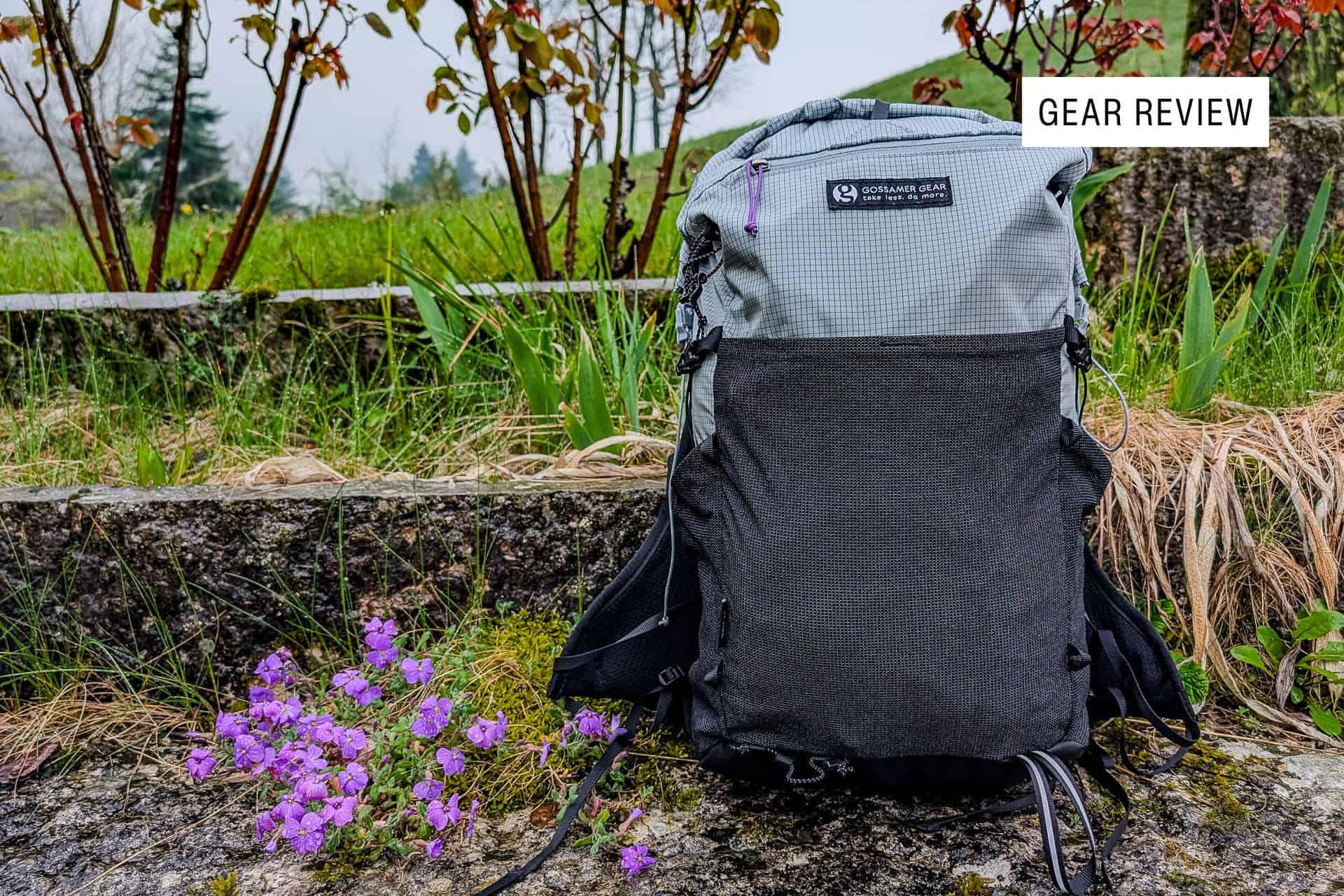
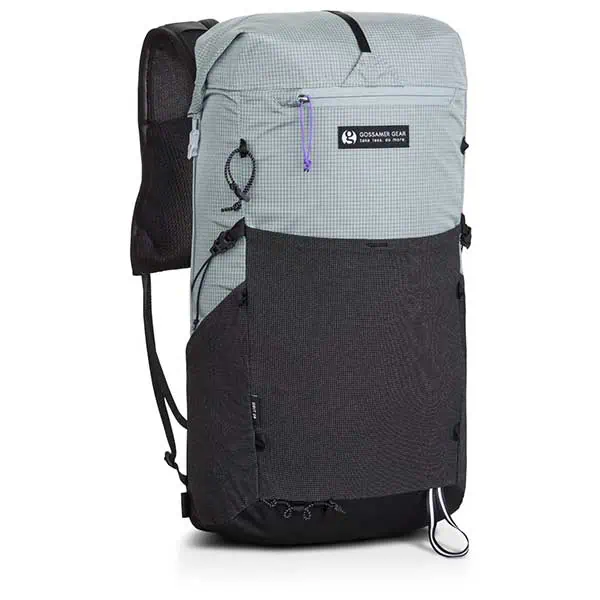






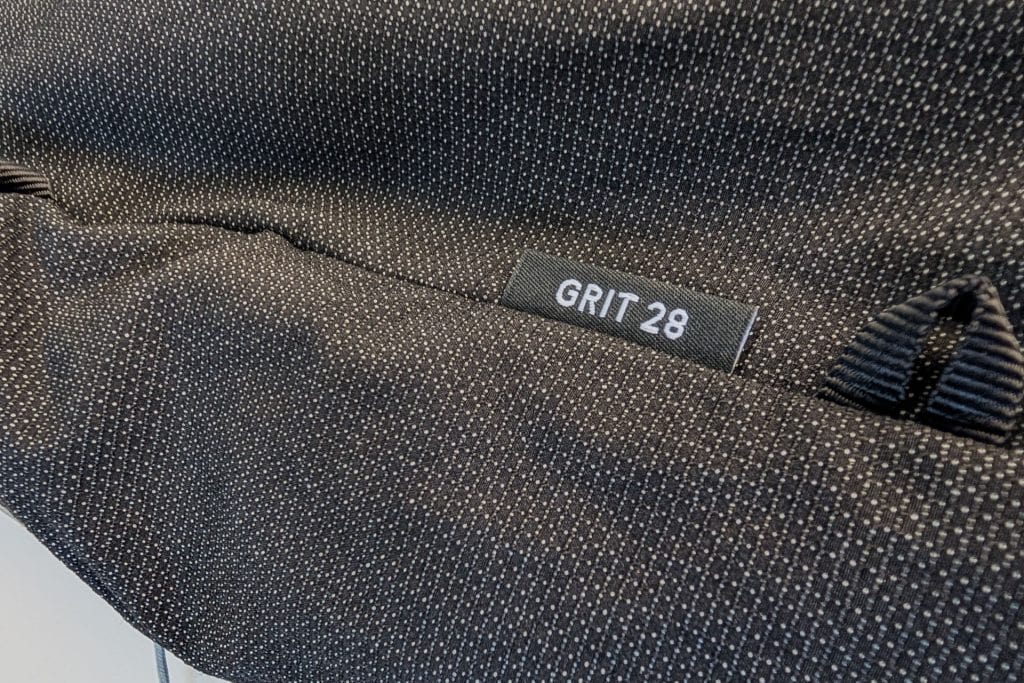


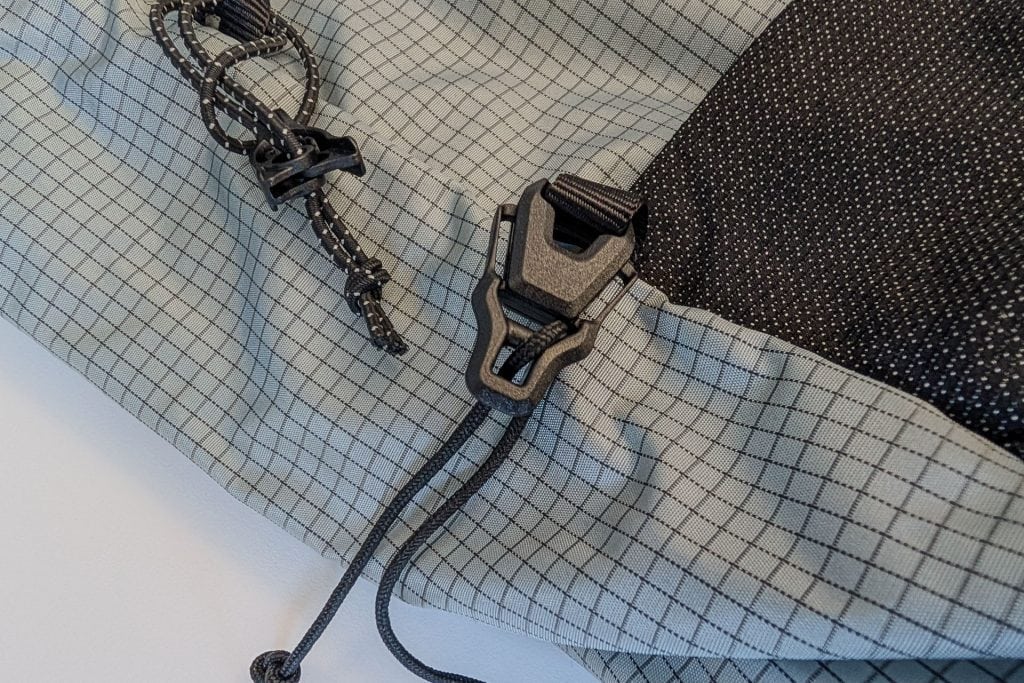





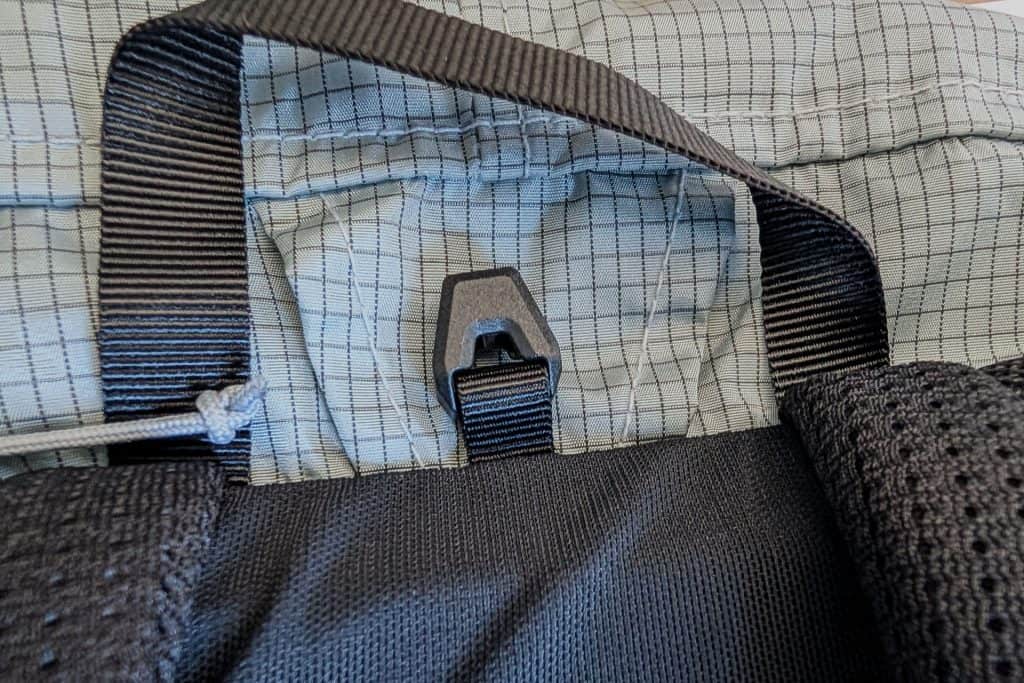


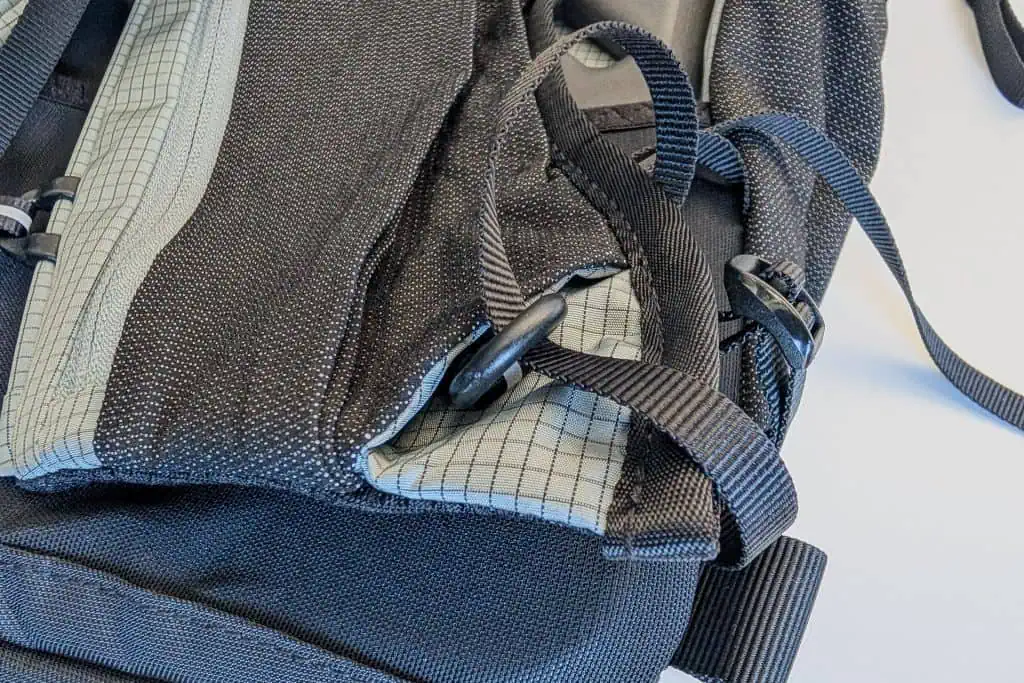










































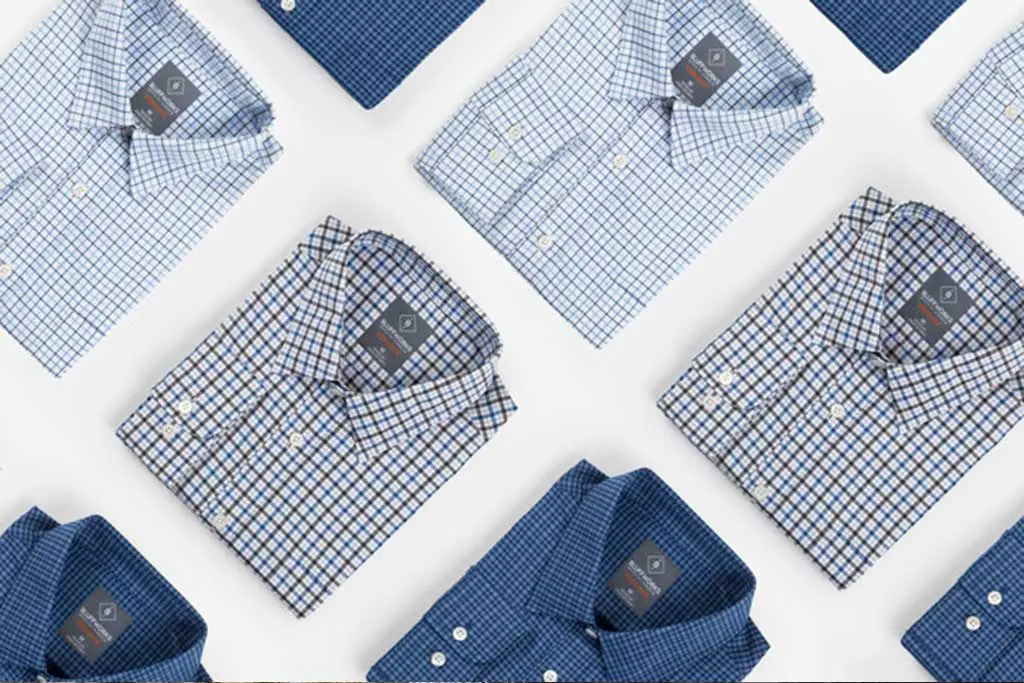


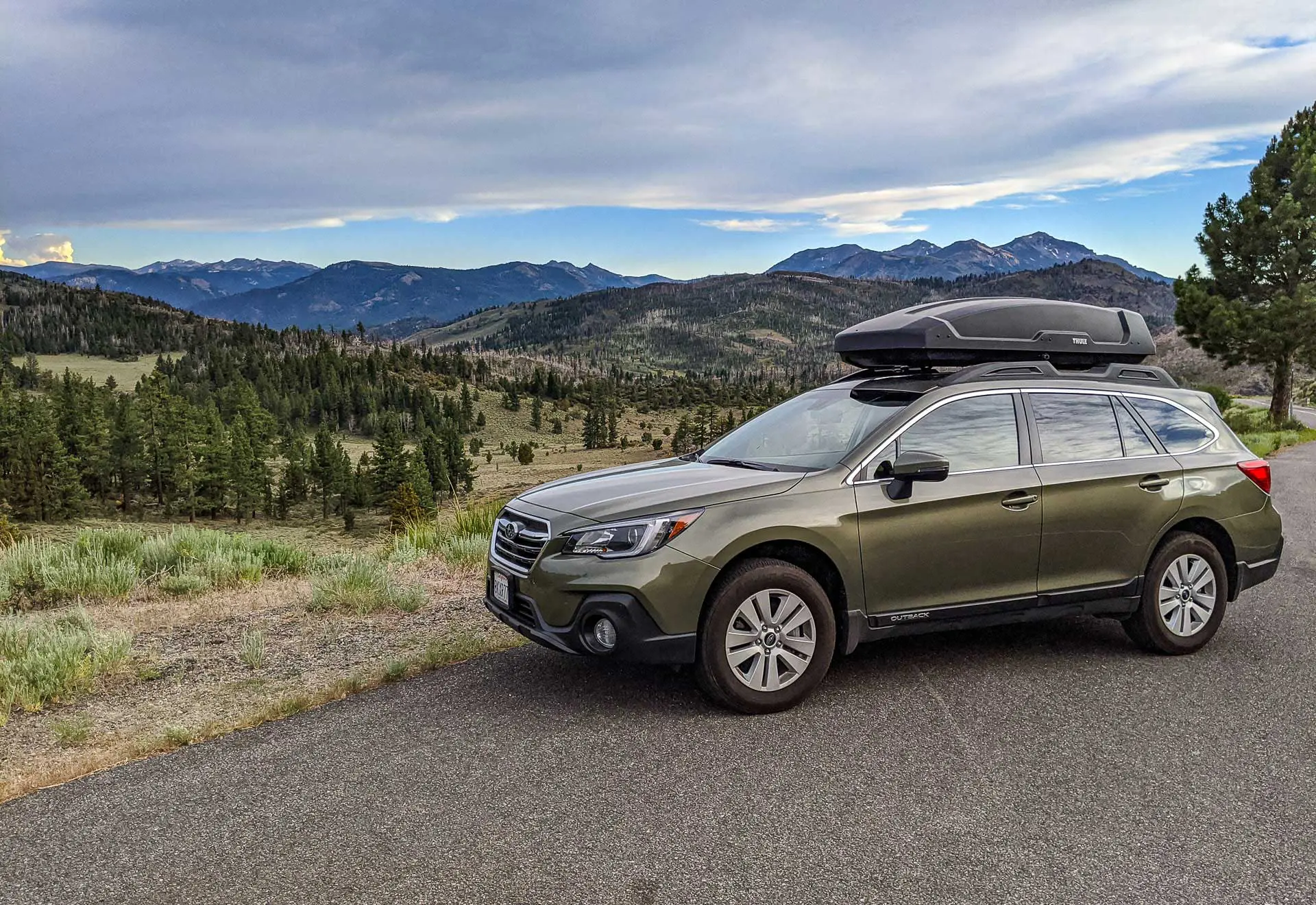
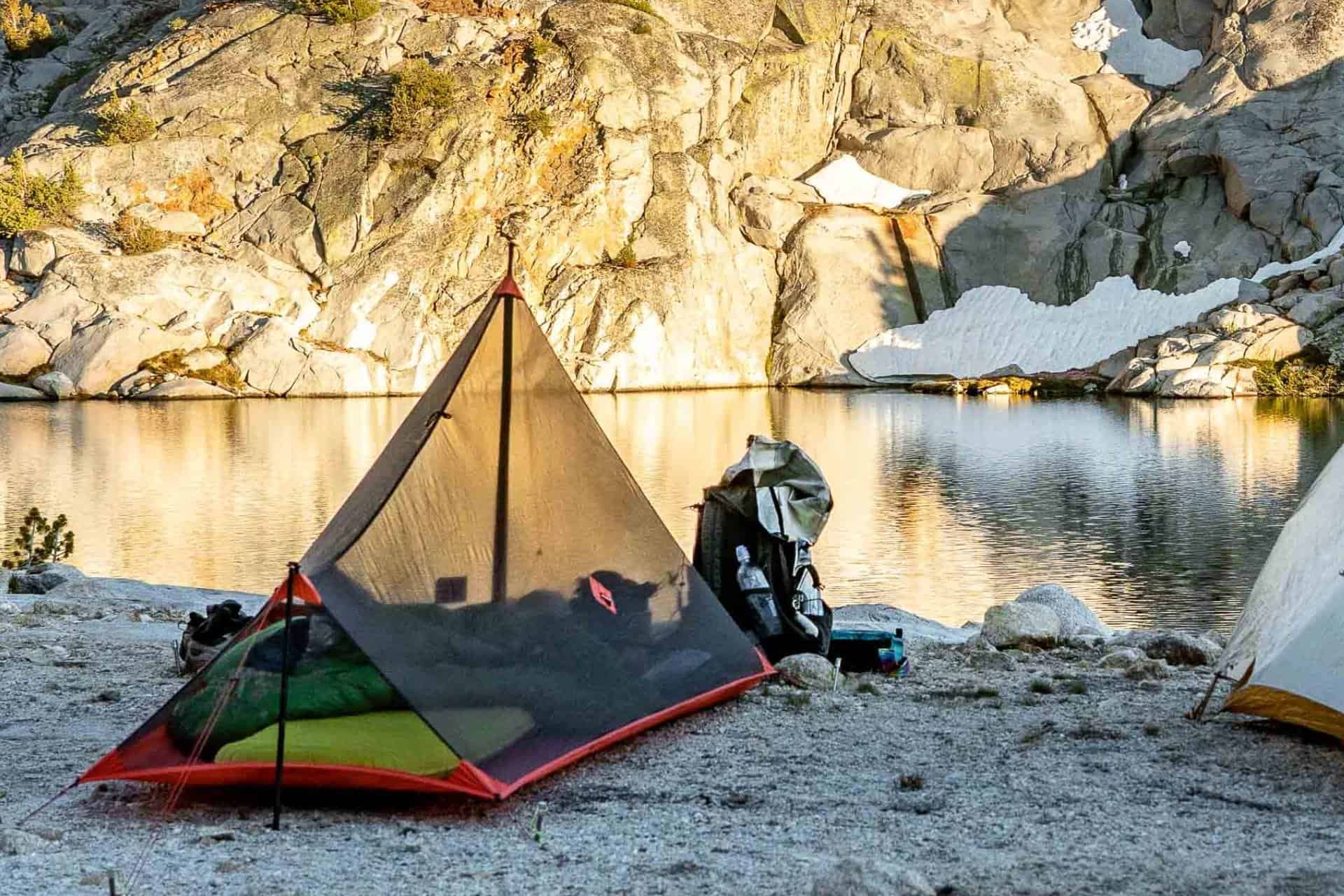
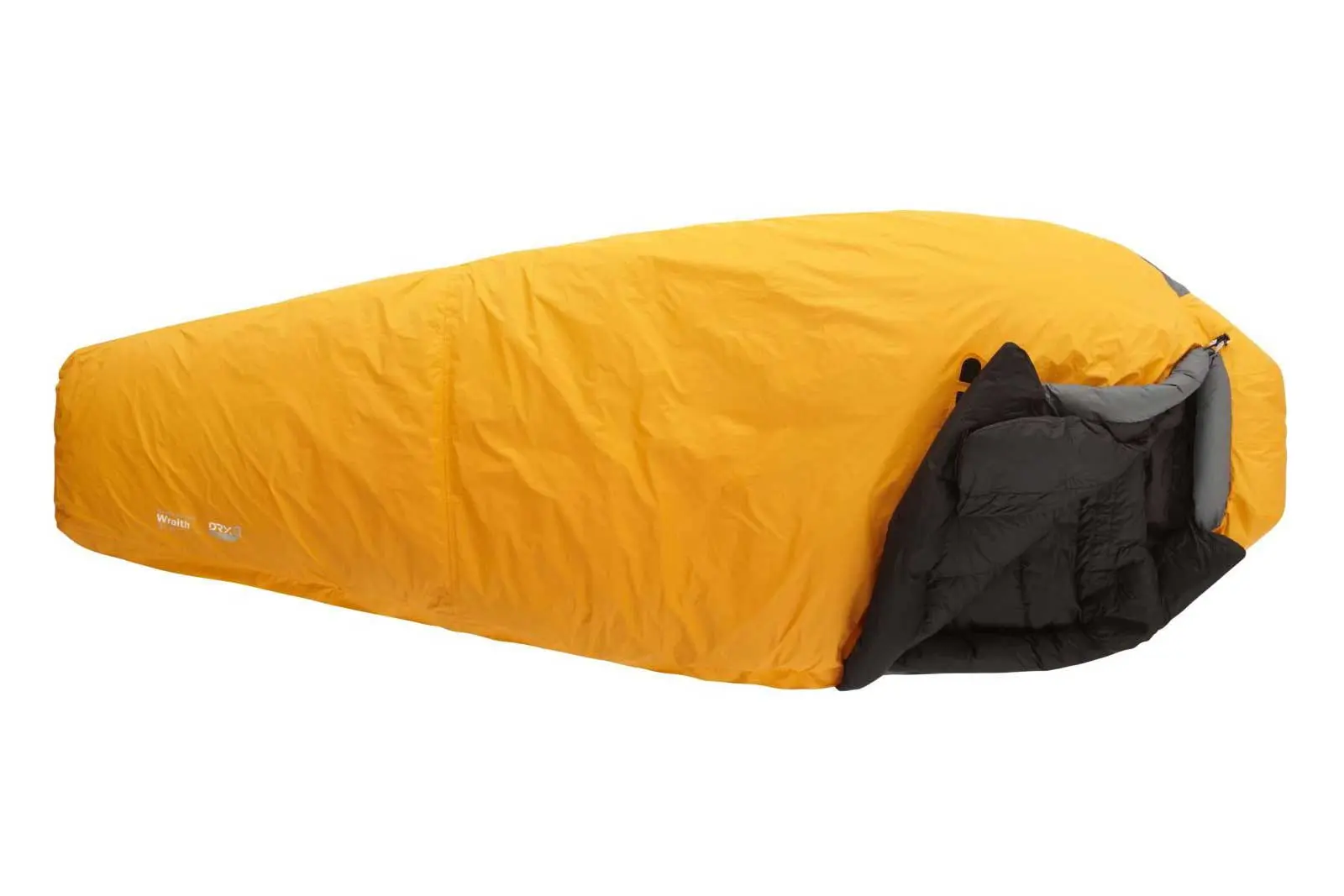
SO, you would not recommend this pack for the CDT? Seems like one would need a different class pack. What would you recommend instead? I have a Delta 65.
I would not recommend that anyone use this pack for the CDT. If you want something with a larger capacity, like the Delta 65, check out the ULA Catalyst.
If you want more suggestions or ideas on what would work well for a CDT hike, I suggest checking out the annual CDT Gear Guide based on the CDT Hiker Survey results.